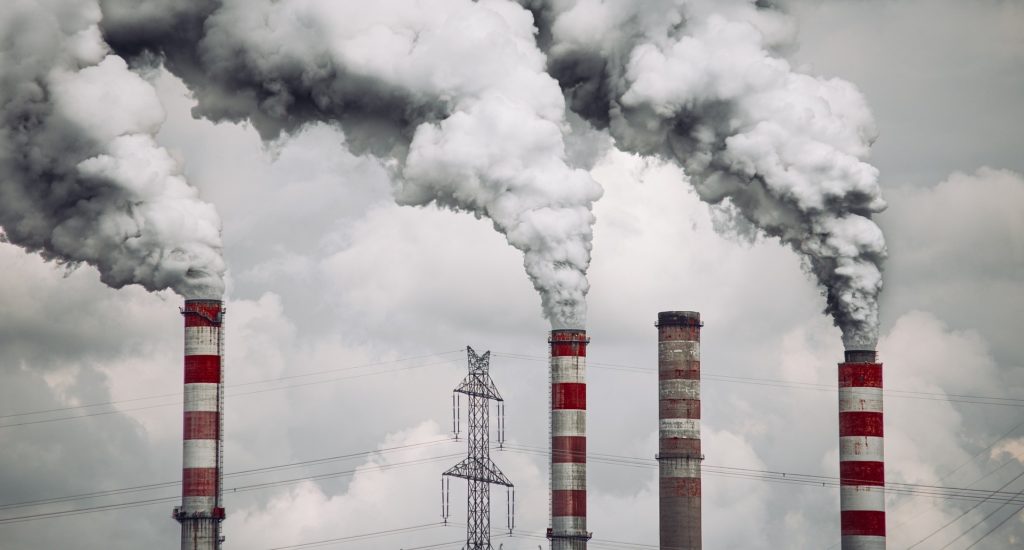‘Critical tool’ launched to track national contributions to climate change

Research published today shows how countries have contributed to global warming through their emissions of key greenhouse gases since 1850 – marking a new effort to track impacts in a critical decade for climate policy.
Involving several members of the team behind the annual Global Carbon Budget, the work builds on published records of historical emissions of carbon dioxide (CO2), methane (CH4), and nitrous oxide (N2O) – gases that have made significant contributions to warming – from the pre-industrial period to 2021.
Led by Dr Matthew Jones, of the Tyndall Centre for Climate Change Research at the University of East Anglia (UEA), UK, the researchers calculated the global mean surface temperature response to emissions of all three gases, and national contributions to warming resulting from emissions of each gas, including those from fossil fuel and land use sectors.
The findings are published in the journal Scientific Data and provide a ‘ranking’ of countries that have contributed most to global warming, as well as insights into how they have changed in recent decades. For example, since 1992 when the United Nations Framework Convention on Climate Change (UNFCCC) was formed, representing a key milestone in international climate policy.
The largest contributors to warming up to 2021 through emissions of all three gases since 1850 were: USA (0.28°C / 17.3% of warming induced by global emissions of all three GHGs); China (0.20°C / 12.3%); Russia (0.10°C / 6.1%); Brazil (0.08°C / 4.9%); India (0.08°C / 4.8%); Indonesia, Germany, UK, Japan, Canada (each contributing 0.03-0.05°C).
Of the three gases, global emissions of CO2 have contributed the most to warming. Up to 2021, warming through global CO2 emission was 1.11°C, through CH4 emission it was 0.41°C and through N2O emission was 0.08°C.
Up to 2021, 69.1% of the total warming caused by the three gases was related to emissions of CO2 alone. This fraction varies across countries and is lowest in those with large agricultural sectors, because agriculture is a significant source of CH4 and N2O emissions.
For example: UK (CO2 makes up 87.6%% of warming induced by national emissions of all three GHGs); USA (83.3%); Russia (76.1%); Indonesia (71.3%); Brazil (64.7%); China (64.3%).
Emissions data for CO2 came from the Global Carbon Budget, with figures for CH4 and N2O provided by the Potsdam Institute for Climate Impact Research (PIK).
“Countries have made commitments to reduce their emissions of CO2, CH4 and N2O with the goal of avoiding the most detrimental impacts of climate change, including from drought, wildfires, flooding and sea level rise,” said Dr Jones.
“This new dataset will prove a critical tool for tracking the effect of changing national emissions on warming, for example as a result of climate policies implemented since the Paris Agreement. During the coming years, we hope to see the warming contributions by all countries level off, with no new additions to warming year-on-year, as commitments to reach net-zero emissions are met or surpassed.”
The contributions to warming of some countries have already been changing relative to others – since 1992, China has overtaken Russia to become the second largest contributor to warming, and Indonesia has overtaken Germany and the UK to become the sixth largest.
Dr Jones said: “Notably, the combined contributions to warming from Brazil, South Africa, India and China rose from 17% in 1992 to 23% in 2021, whereas the contribution from the industrialised OECD countries fell slightly from 47% to 40%.
“These examples illustrate how the contributions to global warming from industrialising nations are rising as their emissions grow relative to early-industrialisers, many of which have begun to decarbonise.”
The research also highlights how the cause of national contributions can vary across countries at different stages of industrialisation. In half of the world’s countries, the land use and forestry sectors still make a dominant contribution to the warming that countries are responsible for when considering all emissions since 1850.
“The contributions of Brazil, Indonesia and Argentina and many other countries are still dominated by emissions linked to historical deforestation and agricultural expansion since 1850,” said Dr Jones.
“However, in most countries, fossil emissions have exceeded land use during the past few decades, meaning additional contributions to warming have mainly been caused by fossil fuel emissions.
“Since 1992, the additional warming caused by global fossil fuel emissions has been over four times greater than the additional warming caused by land use change.”
Due to their long-lived or powerful effects on climate, the emissions of CO2, CH4 and N2O are regulated by the UNFCCC, with targets set for CO2 through nationally determined contributions (NDCs) under the Paris Agreement. Around 90% of NDCs include targets for CH4 and N2O.
Therefore, keeping track of the emissions of CO2, CH4 and N2O and the climatic responses to those is especially important for ensuring accountability with respect to NDCs.
This work also seeks to inform the first Global Stocktake of the UNFCCC, the process set out in the Paris Agreement to assess national progress towards achieving the pact’s goal to limit global warming to 1.5°C. The findings will be presented at COP28 this year.
The team behind the new dataset includes scientists from the Center for International Climate Research (CICERO) in Norway, PIK and Ludwig Maximilian University of Munich in Germany, the International Institute for Applied Systems Analysis (IIASA) in Austria, the Woodwell Climate Research Center in the USA, and University of Exeter in the UK.
Co-author Prof Pierre Friedlingstein, of Exeter’s Global Systems Institute, said: “This publication is quite unique. It will provide not only an annual update on the greenhouse gas emissions for all countries of the world, but also their respective contribution to global warming. The dataset reveals the dominant role of some key countries such as USA, China or EU27, together responsible for 40% of the global warming due to CO2, CH4 and N2O.”
Unlike previous datasets of national contributions, this one will be updated regularly (at least annually) as new national emissions figures become available, for example alongside publication of the Global Carbon Budget. It is publicly available via an online repository.
“By focussing on the three gases that most countries include in their NDCs, this dataset is uniquely positioned to informing climate policy and benchmarking,” said Dr Jones. “It should become a living resource for continually tracking contributions to climate change and, more importantly, how those are changing.”
The warming caused by these three gases is close to IPCC-reported values. The current study does not consider the cooling effect of aerosols emitted by human activities, which the IPCC estimates to be 0.4°C, nor the warming effect of some other emitted gases such as chlorofluorocarbons. These emitted aerosols and gases rarely feature in NDCs.
‘National contributions to climate change due to historical emissions of carbon dioxide, methane, and nitrous oxide since 1850’, Matthew Jones et al, is published in Scientific Data on March 29.



